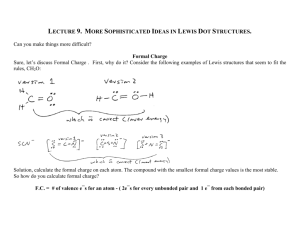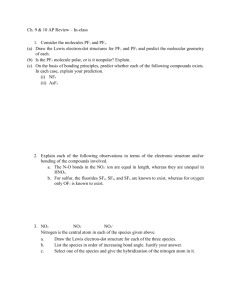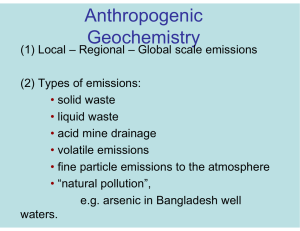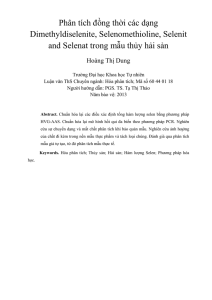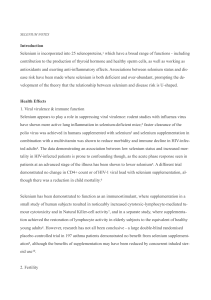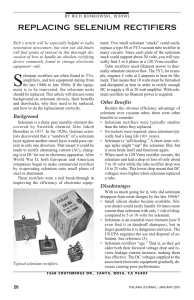worksheet
advertisement
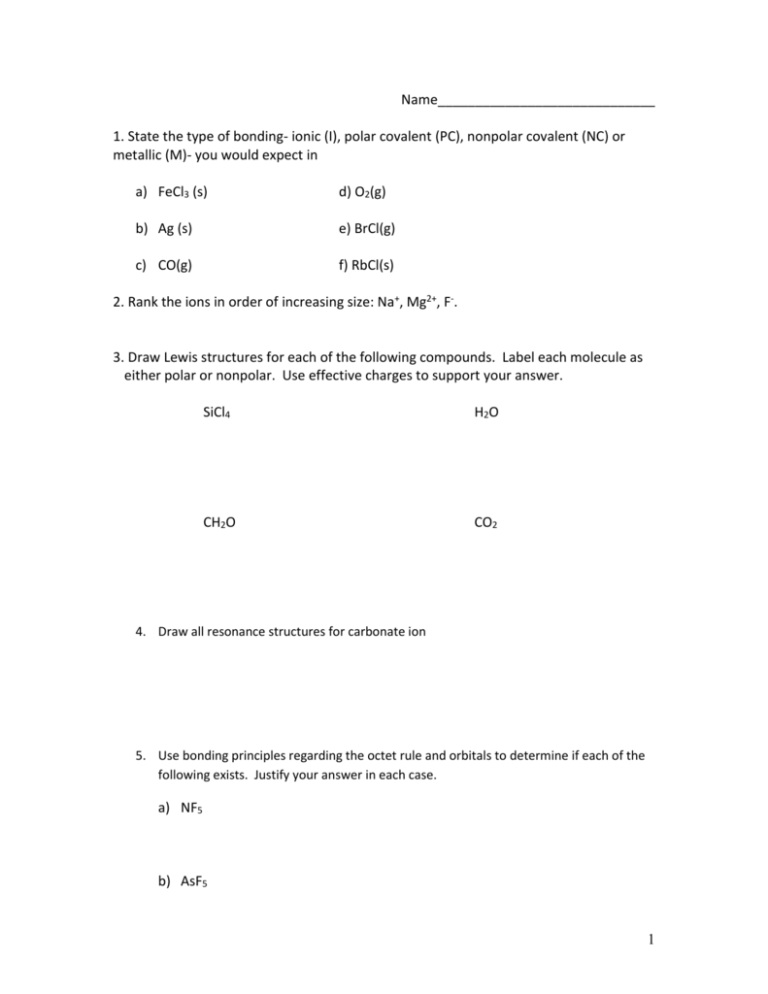
Name_____________________________ 1. State the type of bonding- ionic (I), polar covalent (PC), nonpolar covalent (NC) or metallic (M)- you would expect in a) FeCl3 (s) d) O2(g) b) Ag (s) e) BrCl(g) c) CO(g) f) RbCl(s) 2. Rank the ions in order of increasing size: Na+, Mg2+, F-. 3. Draw Lewis structures for each of the following compounds. Label each molecule as either polar or nonpolar. Use effective charges to support your answer. SiCl4 H2O CH2O CO2 4. Draw all resonance structures for carbonate ion 5. Use bonding principles regarding the octet rule and orbitals to determine if each of the following exists. Justify your answer in each case. a) NF5 b) AsF5 1 6. Consider the reaction: 4NH3(g) + 5O2(g) 4NO(g) + 6H2O(g) Compound Hof (kJ/mol) NH3(g) -46 NO(g) 90 H2O(g) -242 Bond kJ/mol N-H O-O O=O N-O N=O N≡O O-H 391 146 495 ? ? ? 467 a) Use the Table above to determine the standard heat of reaction in kJ per mole of NH3 combusted. b) Using your answer in (a), the table above, and your knowledge of molecular structure, find the bond energy, in kJ per mole, of the correct N-to-O bond. 7. Answer the following questions about the element selenium, Se. (a) Samples of natural selenium contain six stable isotopes. In terms of atomic structure, explain what these isotopes have in common, and how they differ. (b) Write the complete electron configuration (e.g., 1s2 2s2... etc.) for a selenium atom AND ion in the ground state. 2 (c) Indicate which is larger, the selenium atom or the selenium ion. Justify your answer in terms of protons and electrons. (d) Determine the following for SeF4. Lewis Structure: Bond Polarity: Molecular Polarity (Justify): Formal Charge of each element: Hybridization of each element: VSEPR shape: Sigma/Pi Bonding: VSEPR bond angles: 8. Explain each of the following observations using principles of atomic structure and/or bonding. (a) Potassium has a lower first-ionization energy than lithium. (b) The ionic radius of N3- is larger than that of O2-. (c) A calcium atom is larger than a zinc atom. 3 (d) Boron has a lower first-ionization energy than beryllium. 9. Given the following data NH3 ½ N2 +3/2 H2 2 H2 + O2 2H2O H= 46 kJ H= -484 kJ Calculate the H for 2 N2 + 6H2O 4 NH3 +3 O2 10. Write the net ionic equations for the following reactions a. Scandium chlorate solution is mixed with a potassium oxalate solution b. Magnesium metal is burned in oxygen c. Hydrogen peroxide is heated d. zinc metal is placed in a copper II chloride solution 4
